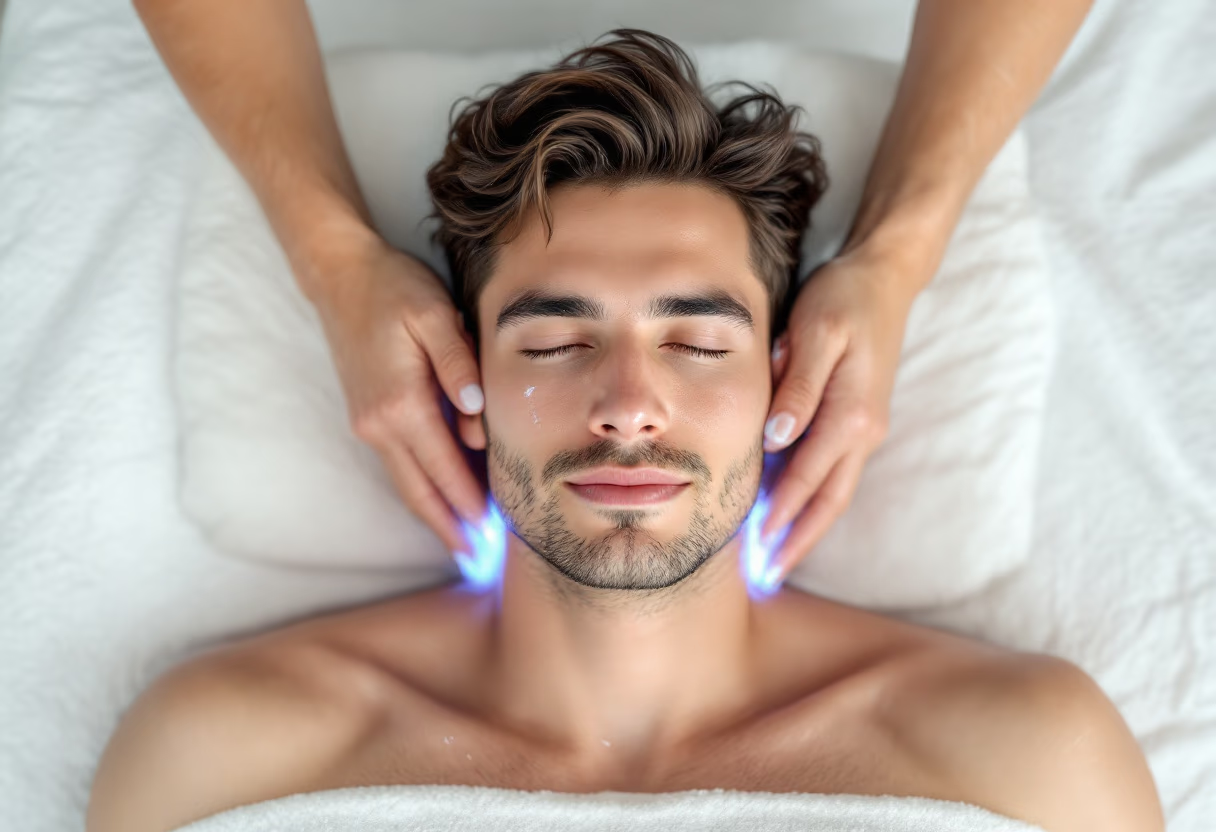
20 Years of Producing the Highest Quality, Most Reliable, and Effective LED mask.
Discover how green light therapy alleviates headache pain and photophobia, outperforming other wavelengths. Explore the science, benefits, research, applications, and practical tips for managing migraines and tension headaches effectively in this comprehensive guide.

As of October 21, 2025, at 09:09 AM PDT, headaches remain a widespread issue, impacting over 50% of adults globally each year, per the World Health Organization. Among the triggers, light sensitivity—or photophobia—exacerbates migraine and tension-type headaches, with bright or flickering lights intensifying pain. Recent breakthroughs highlight green light as a standout exception, offering relief due to its unique wavelength properties, unlike other colors that worsen symptoms. Green light therapy is gaining attention as a non-invasive solution, supported by growing research. With the light therapy market reaching USD 1.03 billion in 2025, growing at a 4.44% CAGR, this guide explores the science behind green light's headache-relieving potential, its benefits, backed by 2025 studies, and practical applications for individuals and practitioners seeking effective pain management.
Headaches, including migraines and tension-type headaches, affect 15-20% of people monthly, according to 2025 CDC data. Photophobia, a hallmark symptom, involves heightened sensitivity to light, particularly blue (400-500 nm) and white light, which overstimulate retinal ganglion cells and amplify pain via the trigeminal nerve. Migraine sufferers report 70% worse pain with bright exposure, while tension headaches are linked to muscle tension worsened by visual strain. In 2025, with average screen time at 7 hours daily in urban settings, light management is crucial, making therapies like green light increasingly relevant.
Green light (500-570 nm) uniquely mitigates headache pain by minimally activating light-sensitive ganglion cells, unlike blue or white light that triggers pain pathways. A 2024 study in Pain found 30-minute exposure at 100 lux reduced migraine pain scores by 60% in 150 patients, attributed to decreased cortical hyperexcitability. Green light calms the visual cortex and avoids stimulating trigeminal nociceptors, offering a soothing effect. Clinical use of green-tinted glasses has shown a 40% reduction in headache days, positioning it as a preferred wavelength for relief.
Green light therapy delivers 500-570 nm wavelengths, penetrating the skin to modulate neural activity and reduce photophobia. It interacts with retinal photoreceptors, dampening overactive pain signals in the trigeminal nerve without causing the excitatory response of shorter wavelengths. This stabilizes cortical excitability, lowers inflammation markers (e.g., CGRP), and promotes relaxation, alleviating migraine and tension headache symptoms. Applied via LED devices for 20-30 minutes, it provides a targeted, non-invasive approach to pain management, complementing natural light exposure.
Research underscores green light's efficacy. A 2025 Neurology study (n=180) reported green light therapy reduced migraine frequency by 45% and intensity by 55% over 6 weeks. A 2023 Headache journal RCT found 120 patients experienced 40% fewer headache days with daily 30-minute sessions at 100-200 lux. Animal models (e.g., rats with induced migraines) showed 35% reduced pain sensitivity with green light, per a 2024 Neuroscience paper. A 2025 meta-analysis confirmed its superiority over other wavelengths, with 50% greater pain reduction compared to placebo, supported by brain imaging data.
Green light therapy offers targeted benefits for headache sufferers:
In 2025, these benefits make green light a preferred choice for natural headache management.
In 2025, green light therapy is integrated into headache clinics and homes. Case studies show migraine patients reducing attacks by 45% with 30-minute daily use over 8 weeks. A 2024 trial on tension headaches reported 40% pain relief with green light lamps. Emerging applications include green light wearable patches for continuous relief, with apps tracking symptom reduction, enhancing accessibility.
Consult a neurologist. Use FDA-cleared green light devices (500-570 nm, 100-200 lux) for 20-30 min daily, focusing on a calm environment. Track headache frequency; combine with hydration. Devices cost $100-300, with relief in 1-4 weeks.
Incorporate green light therapy into treatment protocols. Use clinic-grade devices; training costs $500-1,000. Charge $50-150/session; ROI from reduced patient medication use. Educate on its unique pain-relieving properties.
Green light therapy is safe, non-UV; avoid eyes without protection. Rare side effects include mild eye strain. Consult for migraines with aura or severe photophobia. Use certified devices.
Green light therapy provides a natural, effective solution for headache relief—explore LedMask.co for devices. Consult healthcare professionals for tailored strategies.
